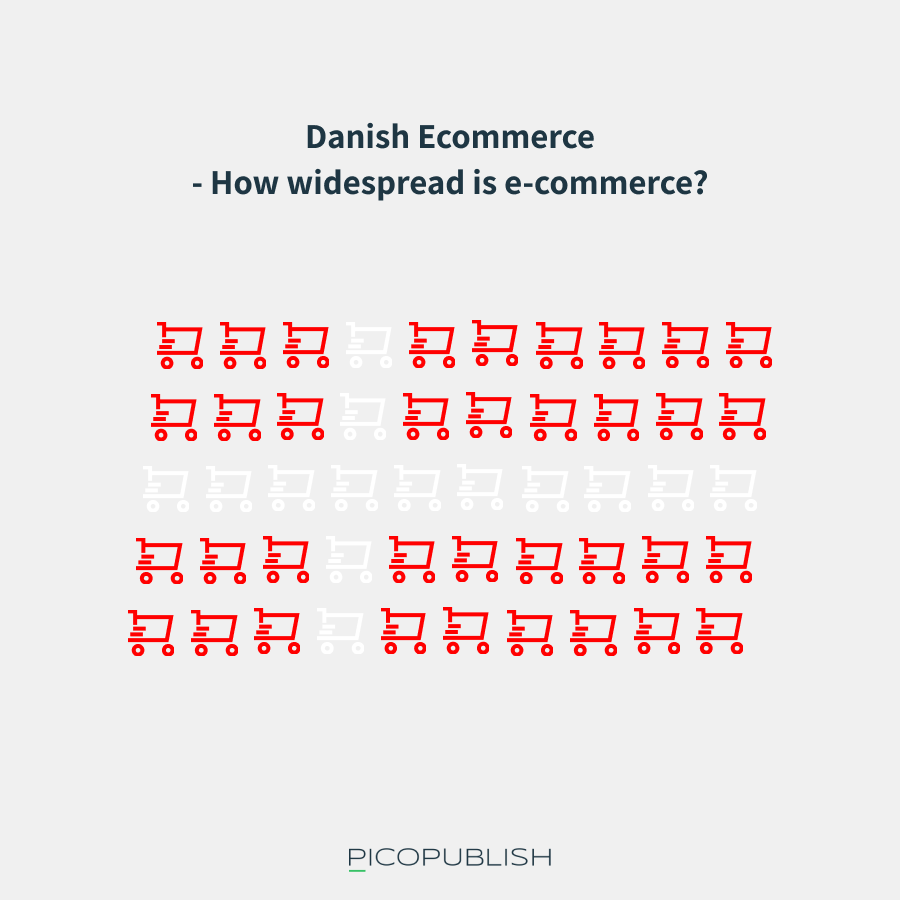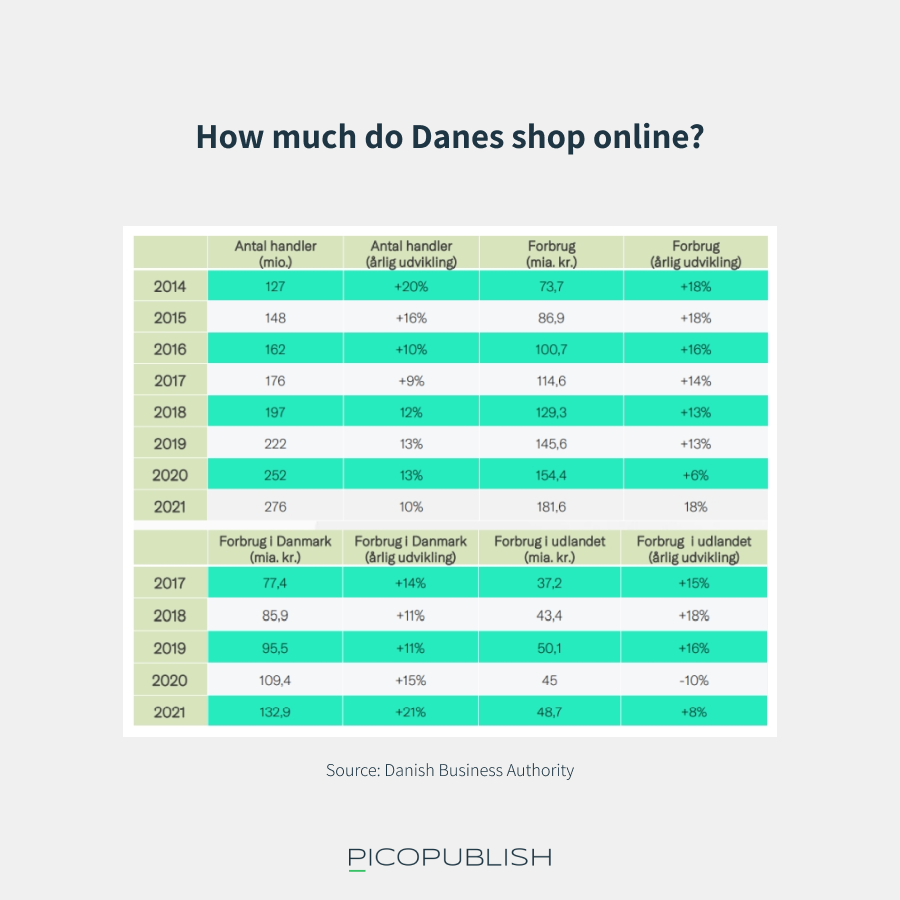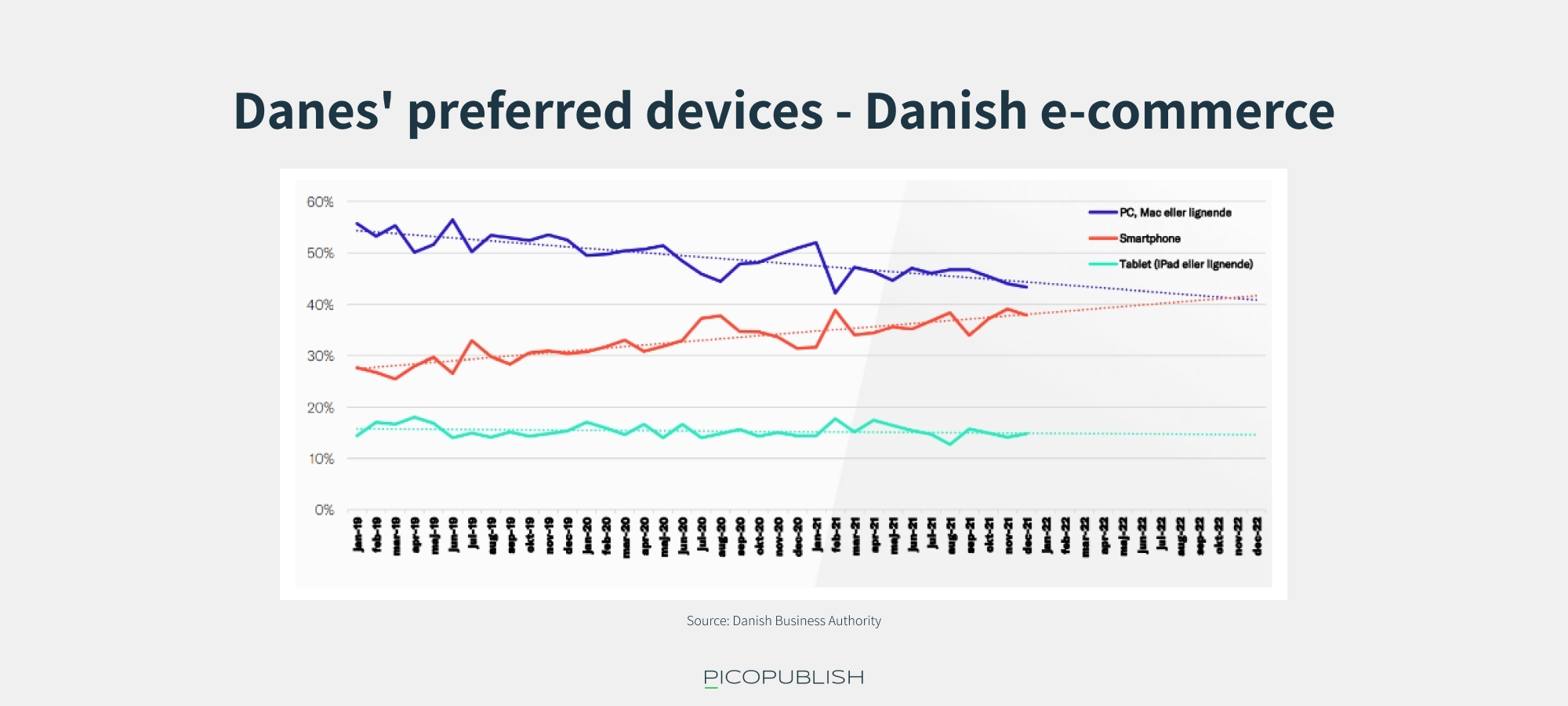How many Danes shop online? And where do they shop? Danish e-commerce has been growing steadily over the past 10 years, and there are no signs that this growth will stop.
Ecommerce—or “e-handel” if we’re speaking Danish—is about selling goods online. That might sound simple, but if we look at how much the industry has changed over the past 10 years, selling goods online is not so straightforward after all.
Especially not if your company really dives into the ecommerce discipline.
Before you get that far, you’ve probably created some kind of business case. Maybe you’ve researched who shops online in Denmark, how often they shop, and whether they buy products in your category. You’ve likely also looked at whether your competitors sell their products online and if you can learn from their approach.
There are many great sources of knowledge and inspiration about Danish e-commerce. One advantage of Denmark being a small country is that we can create quite precise and comprehensive studies of our local markets. One of the best sources for facts about Danish e-commerce comes from Dansk Erhverv, which publishes their large annual e-commerce analysis.
Another source of information about Danes’ online habits is Dansk Industri’s website, danskehandel.dk.
Let’s take a closer look at what the analysis contains and how you can use this knowledge.

Facts about the analyses and Danes’ online shopping habits
The e-commerce analysis from Dansk Erhverv is published as a comprehensive report once a year, but is continuously released in the form of articles and quarterly summaries.
Dansk Erhverv’s e-commerce analysis
- You can find all previous analyses here: https://www.danskerhverv.dk/politik-og-analyser/e-handel/tidligere-analyser/
- You can find the 2022 e-commerce analysis here: https://www.danskerhverv.dk/politik-og-analyser/e-handel/e-handelsanalyser-2022/
The analysis is conducted by Wilke, who carries out ca. 1200 interviews pr. måned.
The full analysis is only available to members of Dansk Erhverv.
Danskehandel.dk
Dansk Industri also regularly publishes articles with analyses and statistics about Danish e-commerce. Just like Dansk Erhverv, Dansk Industri also releases quarterly reports.
- You can find articles from Dansk Industri about Danish e-commerce here: https://danskehandel.dk/artikler/
- You can download the latest reports from Dansk Industri here: https://danskehandel.dk/download-rapport/
In the reports, Epinion is listed as the analysis partner. In Q2 2022, 1,531 respondents were interviewed. The interviews are conducted with individuals over 18 years old who have shopped online within the past month.
Key figures about Danish ecommerce – how widespread is online shopping in Denmark?
Both analyses are packed with knowledge about demographics, economics, consumer habits, year-to-year comparisons, customer satisfaction surveys, and much more.
To get value from the analyses, you need to be able to ask the right questions.
Some of the figures the analyses provide access to include:
-
Number of online purchases
-
Total spending on online shopping
-
Distribution between Danish and foreign e-commerce
-
The largest e-commerce sites
-
Which devices customers use
-
Preferred payment methods
-
How often Danes shop online
-
Average order value per purchase

How much do Danes shop online?
One of the most interesting and fundamental statistics is the total volume of Danish e-commerce—measured both by number of transactions and total amount spent.
Looking at the past 8 years, Danish e-commerce has consistently grown. Ecommerce can therefore be assumed to be here to stay.
In 2021, Danes spent over 180 billion DKK shopping online.
Of this 180 billion DKK, about 130 billion DKK was spent within Denmark, and around 49 billion DKK was spent abroad.
From this, we can also infer that the average shopping basket contains goods worth approximately 650 DKK.
Additionally, 18% of Danes express an expectation to shop MORE online in the future (compared to 8% who expect their activity to decrease).
How do Danes shop online?
Another significant change in our shopping habits is seen in the devices we use to shop.
“Mobile first” has been a common phrase for many years when talking about ecommerce and online shopping. However, many have struggled to fully commit to this mantra—especially B2B companies.
With apps like MobilePay, Apple Pay, and Google Wallet, paying from our mobile devices has become easier than ever before. This development is shaping our consumer habits.
Therefore, it’s not surprising that mobile ecommerce is rapidly catching up to and even surpassing shopping from desktops.


Stay updated on Danish e-commerce and strengthen your commerce efforts
The sources mentioned above are just two of many. However, they stand out as some of the most comprehensive sources of knowledge in the Danish market, and their value should not be underestimated.
As Danes, English-language literature and information are not something that scares us. Unfortunately, this also means we can be quick to apply English analyses and facts to our Danish everyday reality—and that doesn’t always work (at least not every time).
If you are a Danish company focused on ecommerce, it’s beneficial to familiarize yourself with both Dansk Erhverv’s and Dansk Industri’s analyses.
